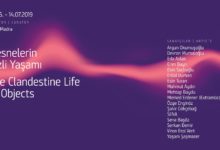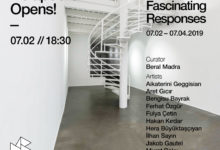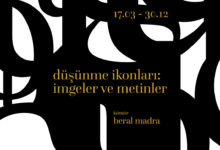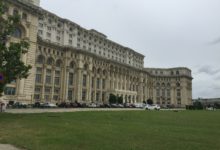TECHNICAL ECSTASY* / TEKNİK ESRİME
Artists / Sanatçılar
ERIC ANDERSEN, KORAY KANTARCIOGLU, ALLAN KAPROW, SERHAT KİRAZ, TEOMAN MADRA, SÜMER SAYIN, ALEKSANDAR SRNEC, AHMET ÖKTEM, YAĞIZ ÖZGEN, PINAR ÖĞRENCİ, JOCHEN PROEHL, WOLF VOSTELL
Curator/Küratör
Beral Madra
19 August/Ağustos – 13 September/Eylül 2014
Kuad Gallery kindly invites you to Autumn 2014 Opening Exhibition to review the appearance and the characteristics of the relations between art and technology of our times. The fact of technology, which had started with mankind’s discovery of nature and ability to sculp and reshape a piece of stone, still prevails with the development of computers and its related technologies designed to replace the human brain and senses. As curiously observing the preceding process and relations between our imagination, creativity, passion for innovation and the opportunities initiated by today’s technology, we see that the mankind has been using his capabilities not only to discover new technologies but also, utilizing those technologies, to accomplish new products. And yet, the question of whether those limitless products and visual objects, the ‘technical images’ as named by Villem Flusser, which serve to reformat our minds and senses, are to be conceived as art objects or not, still remains as an important issue to be answered.
Reciting FLusser’s words as of 1980: ‘They are instruments for turning the messages
of texts imaginable. Texts were originally aimed against images, in order to turn them
transparent for our concrete lived experience, with the aim of freeing humanity from
hallucinatory madness. Technical images have a similar aim: they drive against texts
with the aim to turn them transparent for our concrete lived experience, in order to
free humanity from conceptual madness. The gesture to codify and decipher technical
images takes place at a level that is one step away from the level of writing and two
steps away from the level of traditional images. This is the level of post-historical
consciousness.’
To decide whether an object is merely an end-product of technology or an art object that utilizes the technology is a question of a highly complicated production process and still remains to be an important issue. To decide if an object has been developed through a certain period of history of art, if it contains any messages and, lastly, whether we can define it as merely a decorative object or not, are the main questions waiting to be answered.
Fussler’s post-historical consciousness approach provides a highly enlightening path to the explanation we seek for. If technology itself is defined as the essential apparatus of a product/image, that product/image should be considered and valued as a piece of art if and only if it comprehends all or at least some of the political, social, economical, cultural and philosophical messages and contexts. If not, if left devoid of any of those contexts or messages, that product/image is nothing but only a decorative item which has been produced by use of sheer technology, and serves no more than stimulating a drive just to consume which, in fact, is a human tendency initiated by the neo-capitalist system itself.
There are important differences between the daily routines of populations’ and artists’/designers’ conduct to technology. The nature of an artist’s or a designer’s use and conduct of technology is the expression of his/her personal perspective, his/her feeling of social responsibility or nature of his/her participation in politics. And a designer is the one who conducts his/her ability to utilize technology in order to create a better, more functional and an ecologically friendly environment for people. With the recent exhibiton, the Kuad Gallery intends to contribute to the issue together with his artists and designers, who are thoroughly conscious of the domination and determination of neo-capitalist-technologies in Turkey’s political, economical and cultural structure, and who utilize those apparatus and processes in their paintings, photographs, videos and installations.
Beral Madra
* Villem Flusser, “Our İmages”, Post History, Univocal, 2013, s.91.v.d.
****************************************************************************************
Kuad Galeri, 2014 sonbahar dönemi açılış sergisinde izleyiciyi sanat ve teknoloji arasındaki
ilişkilerin ve özelliklerinin günümüzdeki görüntüsünü yeniden gözden geçirmeye davet ediyor.
İnsanın doğayı öğrenmesi ve yorumlaması, bir taşı yontup ona bir işlev vermesiyle başlayan
teknoloji olgusu günümüzde beynin ve duyguların yerine geçmeye çalışan bilgisayar
ve onunla bağlantılı gelişmiş elektronik araçlarla sürüyor. Bu süreçte düş gücü, yaratıcılık
ve yenilik isteğinin belirleyici işlevi ile teknolojinin sağladığı olanaklar arasındaki ilişkiler
silsilesini ilgiyle izlemekteyiz. İnsan bu özelliklerini hem yeni teknolojilerin keşfi için kullanıyor
hem de bu teknolojilerden yararlanıp yeni yapıtlar üretmek için. Villem Flusser’in “teknik
imgeler”* olarak adlandırdığı, zihin ve ruh dünyamızı programlayan sonsuz çeşitlilikteki
imgelerin ya da görsel malzemenin sanat üretimi olarak değerlendirilip değerlendirilmeyeceği
yanıtlanması gereken bir soru olarak duruyor.
Flusser, 1980’lerde temelde şunları söylüyordu: Teknik imgeler metinlerin mesajlarının
düşlenebilir olmasını sağlayan araçlardır. Başlangıçta metinler imgelere karşıydı, insanlığı
sanrısal delilikten kurtarmak için, onları bizim somut yaşanmış deneyimlerimiz için
şeffaflaştırıyordu. Teknik imgelerin de aynı amacı vardır: onlar da metinlere karşı çıkar,
onları bizim somut yaşamış deneyimlerimiz için şeffaflaştırmak ve insanlığı kavramsal delilikten
kurtarmak için. Teknik imgeleri şifrelemek ve şifresini çözmek işi yazı yazmak düzecinden bir
adım ötedeki, geleneksel imgeler düzecinin iki adım ötesindeki bir düzeçte gerçekleşir. İşte bu
düzeç post-tarih bilinci düzecidir.
Günümüzde bir yapıtın ne kadar salt teknoloji ürünü olduğunu ve ne kadar teknolojiyi
kullanan sanat yapıt olduğunu belirlemeyi gerektirecek kadar karmaşık bir üretim söz konusu.
Salt teknolojinin sunduğu olanağı gösteren, içerik açısından herhangi bir mesajı olmayan,
estetik açıdan da sanat tarihi bağlamında bir sürecin ürünü olmayan işleri dekoratif ürün
olarak ayırt etme gibi bir zorunlulukla karşılaşılıyor. Bunun Flusser’in önerdiği post-tarih
bilinci ile yanıtlanması söz konusudur.
Teknoloji bir yapıtın/imgenin bizzat ana malzemesiyse, o yapıt/imge ancak günümüzün
siyasal-toplumsal-ekonomik-kültürel-felsefi içeriklerden birisine veya birkaçına sahipse
sanat yapıtı olarak değerlendirilebilir. Bu türlerde bir içerik veya kavramsal çerçeveden
yoksun teknoloji kullanılarak oluşturulmuş ürünler neo-kapitalist sistemin sunduğu tüketim
arzularını tetikleyen dekoratif algı ürünleridir. Geniş kitlelerin teknolojiyi gündelik yaşamlarında
kullanmaları ile bir sanatçı veya tasarımcının teknolojiyi kullanması arasında önemli bir fark
vardır. Sanatçı veya tasarımcı teknolojiyi bireysel görüşünün, toplumsal sorumluluğunun,
ya da siyasal katılımcılığının ifadesi olarak kullanır. Tasarımcı ise teknolojiyi insan için daha
iyi, işlevsel, ekolojik bir yaşam ortamının yaratılmasını sağlamak için kullanır.
Kuad Galeri, Türkiye’nin siyasal, ekonomik, kültürel gelişiminde belirleyici işlev taşıyan ve
neo-kapitalist sistemin etkin aracı olan teknolojik imgelerin egemenliğinin bilincinde olan
ve sanat üretimlerinde teknolojik araçlar, teknolojik süreçler kullanan ya da teknolojiyi işaret
eden oluşumları yorumlayan ve Kuad Galeri ile çalışan sanatçıların resim, fotoğraf, video
ve yerleştirmelerden oluşan bir seçkiyi sergileyerek bu alana bir katkı sunmayı amaçlıyor.
Beral Madra





